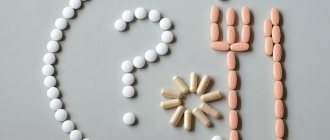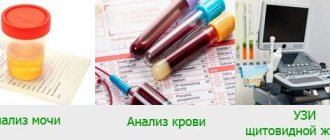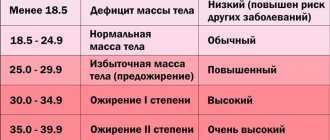As you know, the human body is considered the most complex system of all that was created by nature. Every trace element, vitamin, molecule plays an important role in the course of biological processes. At the same time, it is believed that almost the entire periodic table is present in the body, and if some substance becomes insufficient, then against this background various diseases develop, for example, anemia. This disease occurs as a result of a lack of iron in the tissues of the body, the causes and manifestations of which are the subject of this article.
The role of iron in the human body
Iron is one of the most common substances on earth, without which life is impossible for either plant or animal organisms. The role of this component is extremely important for humans, since iron contributes to the occurrence of many biologically important processes. Moreover, if you collect all the iron that is in the human body, this can be enough to make up to five small cloves.
- This substance is mainly present in the blood and organs that are responsible for hematopoiesis, namely the liver, spleen and bone marrow. This trace element is required for the formation of hemoglobin, the protein that forms red blood cells. Hemoglobin captures oxygen and ensures its transport in the body, therefore, iron helps to saturate the internal organs with oxygen and remove carbon dioxide from the body.
- At the same time, the described microelement participates in and improves the processes of intracellular metabolism, including promoting the most productive metabolism of B vitamins. Iron also participates in the formation of DNA and ensures the full growth and development of most body systems. This component is important for the activation of interferon, which describes iron as an immunoforming component.
Importance of Iron
Iron supports the functioning of a woman’s body by performing the following functions:
- Oxygen transport. As a component of hemoglobin, iron ensures the transfer of oxygen from the lungs to the cells. Oxygen carries out biochemical reactions. Through the same hemoglobin, carbon dioxide released by cells is removed to the outside.
- Participation in the production of proteins and enzymes. Iron is part of enzymes secreted by the liver to neutralize harmful substances. It is also a component of the hemoglobin protein. With its help, blood cells are formed. The amount of iron affects the level of leukocytes, which provide protection against infections.
- Hormone production. Thyroid hormones contain iron. They regulate the functioning of the kidneys, cardiovascular system, and brain.
Daily iron requirement for women
On average, an adult living in a developed country, where there are no problems with food shortages, has about 4-5 grams of iron in the body. Moreover, most of it (up to 70%) is contained in liquid tissue. In order for a person, especially when it comes to the female body, to feel good, it is necessary to systematically obtain iron from the outside.
For women, the daily dose is approximately 10-20 grams, but this is a rather arbitrary indicator that can depend on a large number of factors. It is interesting to note that women need to consume much more iron daily than men. It should also be noted that girls carrying a child or breastfeeding require more not only iron, but also other substances.
Persons leading an active lifestyle or involved in professional sports need to increase the dose. In this case, the daily norm of the described microelement can reach up to 45 milligrams of the substance, however, only a specialist can calculate the correct dosage, and therefore you should not consume iron-containing vitamins unless there is a reason for it.
Vitamin B12 deficiency as a cause of hair loss
Pernicious anemia is another cause of increased hair loss. It occurs against the background of vitamin B12 deficiency and is accompanied by the following symptoms:
- asthenia - increased fatigue, weakness;
- arrhythmia;
- insomnia;
- dyspepsia and other digestive problems;
- impaired concentration and other problems of brain activity.
B12 is a vitamin that is involved in the metabolism of every cell in our body. Our body has the amazing ability to produce it from bile and store reserves for five years or more. When the digestive system is in order, there is no reason to worry. The problem arises if the intestines are disrupted. A healthy gut contains an enzyme that helps produce vitamin B12. A deficiency of this enzyme has a bad effect on the condition of the hair follicles, the hair becomes weak and begins to fall out.

Causes of iron deficiency in the blood
A lack of iron in the body is called anemia, or anemia, since this pathology occurs most often with bleeding. Most often, the problem is faced by people who have suffered an injury, due to which significant blood loss was recorded. This phenomenon is also typical for girls with menstrual irregularities, which is especially common in adolescence and is referred to as juvenile bleeding.
Anemia syndrome can be observed when the nutritional balance is disturbed, and therefore a person does not consume enough iron in food. This problem is faced mainly by girls who adhere to strict diets, as well as people who play sports, but do not take into account the body’s increased need for nutritional components.
Among the main causes of anemia, one can also highlight a violation of the transport of this substance, which is observed with a lack of transferritin (the enzyme responsible for the absorption of iron). There are also anemias that have a genetic (congenital) nature and ailments caused by pathogenic organisms (parasites, bacteria, infections).
Should I see a doctor?
If you experience symptoms indicating a possible iron deficiency, you should consult a doctor .
He will do a complete blood count showing your hemoglobin level, which will help detect iron abnormalities, if any.
Also, the process of diagnosing iron deficiency may require additional tests: total iron-binding capacity, serum ferritin, serum iron.
If the diagnosis is confirmed, the causes of the deficiency are determined , then the doctor will decide how treatment will be carried out.
If the condition is caused by internal bleeding, the main therapy will be aimed at eliminating it.
But under any conditions, the doctor will prescribe iron-containing medications to the woman, supplementing them with vitamin complexes.
Iron-containing preparations are prescribed in the form of tablets or capsules for oral administration, since the intestines are responsible for the absorption of metal ions, to which encapsulated and tableted preparations are easily accessible.
The capsule or tablet must be swallowed without chewing.
Symptoms of iron deficiency in a woman’s body
Iron deficiency is a phenomenon that can have a completely different range of symptoms. With this disease, namely iron deficiency anemia, the level of hemoglobin in the blood drops significantly, and as for the specific signs of the disease, they can be divided into symptoms characteristic of certain stages of the disease. Thus, the features of the course of anemia are described below in accordance with the stage of the described syndrome.
How does the prelatent stage manifest itself?
The main symptom, which unfortunately does not give a clear understanding of what caused it, is asthenic syndrome. The person feels weak, depressed, and noticeably lost strength. These physical conditions are accompanied by changes in mental state, against which depression and irritability develop. Many people complain of dizziness and headaches, as well as difficulty swallowing.
The first stage is characterized by an increase in heart rate, which is caused by any, even the most insignificant, physical activity. Grooves and local areas of inflammation and redness appear on the tongue. Patients often encounter a distortion of taste sensations, while preferences in aromas change, and the smell of gasoline begins to attract them. Often pregnant women feel the urge to eat chalk, which may also indicate the onset of anemia.
How to determine latent iron deficiency
During the latent stage, the patient’s condition only worsens and the disease progresses. During this period, you can feel an even greater decrease in activity, temperature and pressure drop. Dermatological manifestations appear: seizures form, the skin acquires a pale, bluish tint. With all this, painful sensations arise in the abdominal area, mental processes worsen, including qualitatively impaired memory and the ability to reproduce information.
Stage of pronounced deficiency
The transition of the disease to a pronounced stage, as well as its subsequent progression, is dangerous for the patient’s life. During this stage of the disease, there is a disturbance in the digestive process, which causes belching, bloating, and constipation. Due to the fact that the immune system does not fully perform its functions, the risk of infectious and viral diseases increases.
Due to hormonal changes in patients with anemia at the last stage, the likelihood of tumors increases. At this point, poor growth of hair and nails can be noted, and distortion of their shape is also noted (nails become concave). People experiencing severe iron deficiency complain of tachycardia and pain in the heart.
Diagnostic methods

The main method for diagnosing insufficient iron levels is a clinical and biochemical analysis of ferritin in the blood, which allows one to differentiate symptoms from the presence of iron deficiency in the patient.
Additional methods to identify the cause of iron deficiency are:
- Ultrasound of the thyroid gland;
- Feces for helminthiasis;
- Ultrasound of the pelvic organs.
Diagnosis of the body depends on how iron deficiency was determined. It is necessary to confirm the absence of bleeding and other reasons why iron leaves the body, and helps answer the question of why anemia occurred.
Diagnostic procedures allow us to identify deviations and prescribe rational treatment.
What and how to compensate for iron deficiency
Today, the problem of iron deficiency has been studied in sufficient detail, and therefore there are a large number of methods to combat a specific disease. In the early stages, iron deficiency anemia is eliminated by correcting the nutritional system, in which food of animal origin predominates, since the key enzyme from this category of products is absorbed better than from food of plant origin. If the diet does not allow you to completely cure the disease, which requires at least three months, then drugs are used, which is discussed in more detail below.
List of foods containing iron
Obviously, there are a lot of iron-containing foods, but this does not mean that food with a large percentage of this microelement will contain the necessary dose of iron for anemia. As noted, iron from meat is absorbed much better than the substance from cereals and vegetables, since plant foods contain many inhibitors that do not allow the enzyme to be absorbed in the required amount. At the same time, you should describe the foods that contain the most iron, which will help you create the most appropriate diet.
Among foods of animal origin, the following will have the greatest therapeutic effect:
- cheese made from skim milk;
- beef liver;
- beef, lamb and pork;
- eggs, especially the yolk;
- language;
- cottage cheese;
- bird;
- fish, etc.
Among the absolute leaders in iron content among plant foods, it should be noted:
- beans;
- mushrooms;
- nuts;
- poppy;
- dried apricots;
- dill;
- thyme;
- seaweed, etc.
The best iron supplements
It should be understood that pharmacological treatment of anemia is possible only as a result of examination and prescription of specific drugs by the attending physician. Therapeutic tactics are based on eliminating the pathology that led to the loss of the microelement, as well as restoring the proper level of iron in the blood. In combination with vitamins containing iron, it is customary to use additional substances that promote better absorption of this component. Among the most common medications for anemia, it should be noted:
- Heferol;
- Ferronate;
- Irovit;
- Fenyuls;
- Actifferin, etc.
What threatens iron deficiency: consequences
If iron deficiency is an advanced process, the symptoms and course of which are ignored for some reason, then there is a risk of a serious deterioration in health, which in a critical situation can lead to death. First of all, a patient with advanced anemia will encounter painful sensations in every part of the body and will experience constant weakness and malaise. Due to suppressed immunity, severely ill patients suffer from a large number of diseases that are a consequence of anemia, including worsening chronic processes and significantly increasing the risk of developing cancer.











